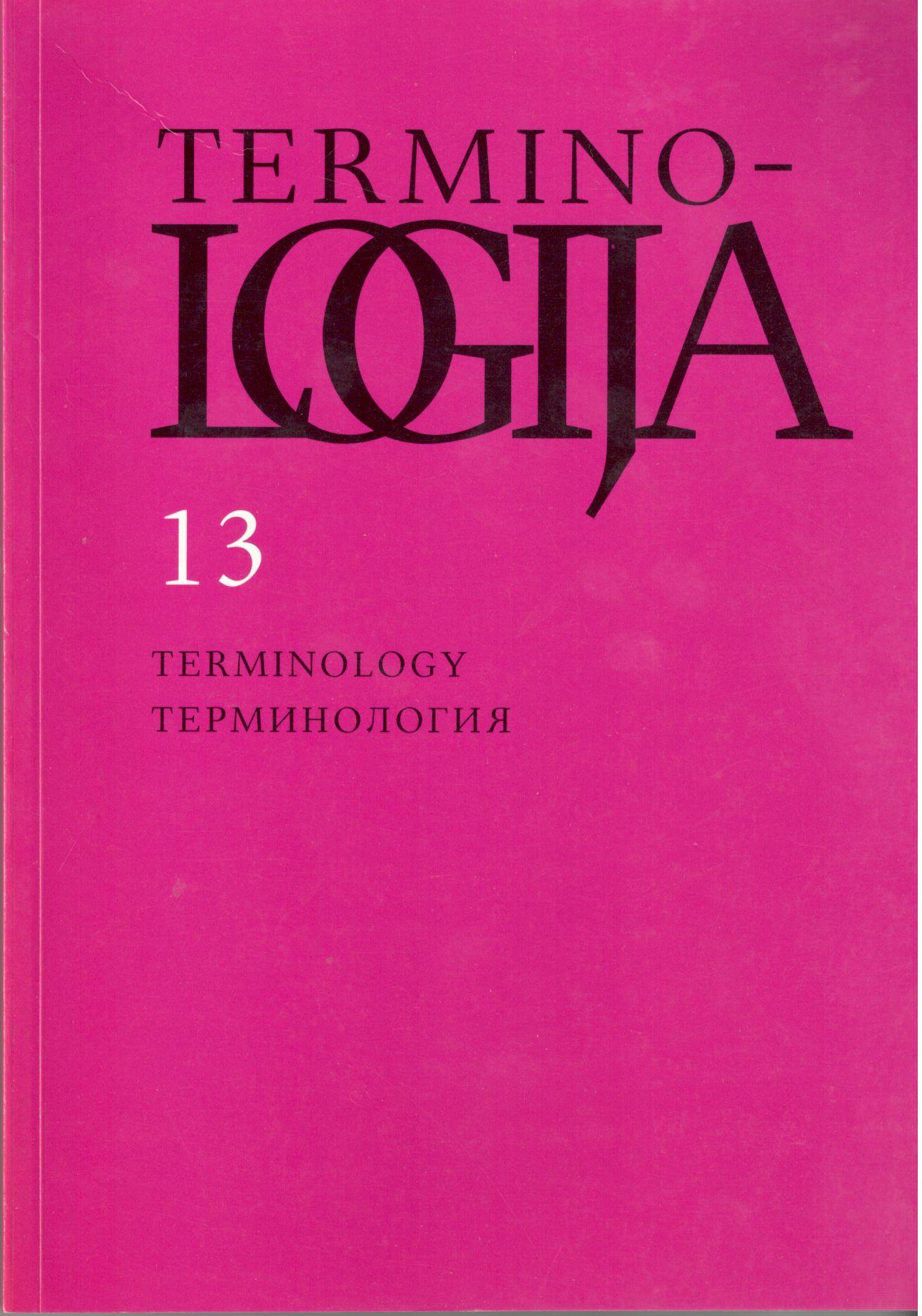Номенклатура versus терминология (три подхода к выделению номенклатурных наименований)
Nomenclature versus terminology (three approaches to nomenclature)
Author(s): Sergei ShelovSubject(s): Language studies, Applied Linguistics, Lexis, Descriptive linguistics, Philology
Published by: Lietuvių Kalbos Institutas
Keywords: terminology; nomenclature
Summary/Abstract: In common usage, nomenclature is often a synonym of terminology. In scientific tradition, however, the word ‘nomenclature’ seems to be used in a more specific sense, and contraposition of nomenclature and terminology can be found.This article does not claim to cover the subject completely but attempts to review the most common definitions of nomenclature as opposed to terminology, since terminology and nomenclature are considered to be the major part of the LSP vocabulary.At least three different concepts of nomenclature are detected:nomenclature as a set of scientific and popular names for members of the plant and animal kingdom (nomenclature 1); nomenclature as a set of designations of ‘lower natural subdivision’ (nomenclature 2); nomenclature as a set of conventional notations to denote specific concepts and objects (nomenclature 3).Different interpretations of nomenclature represent different scientific traditions. Nomenclature 1 goes back to the times of K. Linneus and his invention of binary nomenclature for biological species and his indisputable success in attempts of setting it up in denoting natural subjects. The concept of nomenclature 2 was given birth in scientific practice by philosophical recognition of this fact and meditations over it. W. Whewell and J. S. Mill are the most worth mentioning among others for general discussion of the ‘nomenclature VS terminology’ controversy and its theoretical foundation. Though not completely consistent, this controversy was generalised to cover the majority of the names for chemical elements and some far reaching perspectives on this basis were outlined in distinguishing between empirical and theoretical names of science. Nomenclature 3 is usually under consideration of linguists. The use of alphabetic, digital, alphanumeric systems of symbols is a typical feature in the creation of nomenclature 3. Proper names are also used to make up nomenclature 3. It is the most intriguing how these notations come into being and get familiar within the same professional community.Different interpretations of nomenclature are not totally unrelated and independent. In fact they have much in common on the ways they are described in the literature. Though separating them from one another is rather difficult, different historic roots can be traced up to nowadays.
Journal: Terminologija
- Issue Year: 2006
- Issue No: 13
- Page Range: 33-47
- Page Count: 15
- Language: Russian

